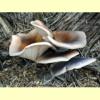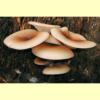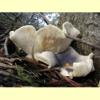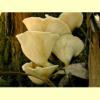





Bougher, N.L. & Syme, K. (1998), Fungi of Southern Australia. University of Western Australia Press, Nedlands. [Description, Illustration and Microcharacters of O. nidiformis]
Fuhrer, B. (2005), A Field Guide to Australian Fungi. Bloomings Books, Hawthorn. [Description and Illustration of O. nidiformis]
Grey, P. & Grey, E. (2005), Fungi Down Under. Fungimap, South Yarra. [Description, Illustration and Map for O. nidiformis]
Grgurinovic, C.A. (1997a), Larger Fungi of South Australia. The Botanic Gardens of Adelaide and State Herbarium and The Flora and Fauna of South Australia Handbooks Committee, Adelaide. [Description, Illustration and Microcharacters of O. nidiformis]
Hood, I.A. (2003), An Introduction to Fungi on Wood in Queensland. University of New England, School of Environmental Sciences and Natural Resources Management, Armidale. [Description and B&W Illustration of O. nidiformis]
Kirchmair, M., Pöder, R., Huber, C.G. & Miller, O.K. Jr (2002), Chemotaxonomical and morphological observations in the genus Omphalotus (Omphalotaceae), Persoonia 17: 583–600. [Microcharacters of O. nidiformis]
McCann, I.R. (2003), Australian Fungi Illustrated. Macdown Productions, Vermont. [Illustration of O. nidiformis, including image made by fungus-emitted light]
Miller, O.K., Jr (1994), Observations on the genus Omphalotus in Australia, Mycol. Helv. 6: 91–100. [Description, B&W Illustration and Microcharacters of O. nidiformis]
Young, A.M. (2005b), A Field Guide to the Fungi of Australia. University of New South Wales Press, Sydney. [Description and B&W Illustration of O. nidiformis]
